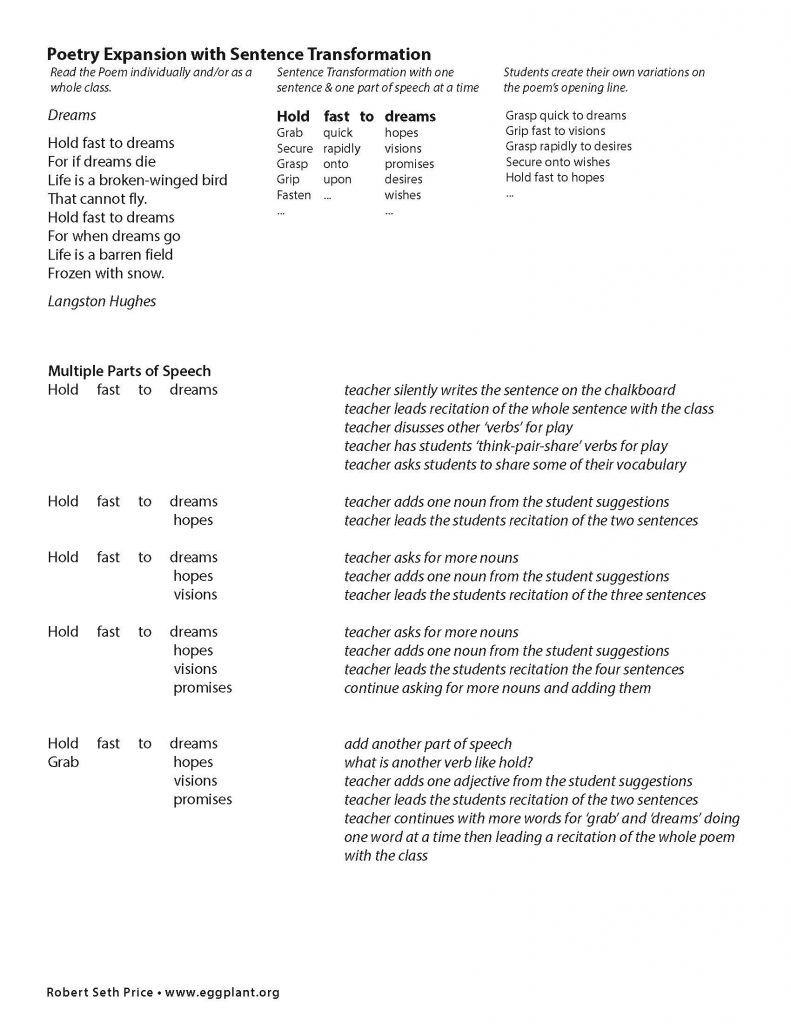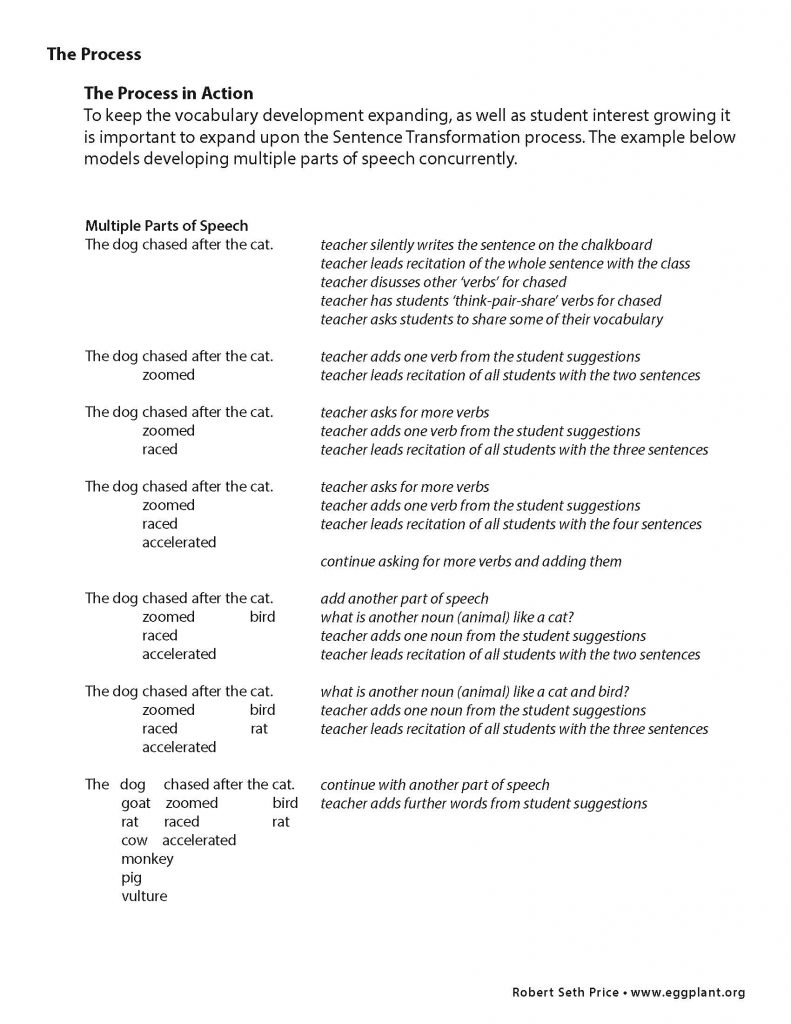Page Overview
- Description Including How To
- Videos including with Students, Teachers and Bilingual
- Examples for Early Elementary, Upper Elementary, Middle School and Secondary
- PDF of Sentence Transformation
- PowerPoint
Sentence Transformation for Vocabulary Development
a collaborative method to increase vocabulary, fluency and ideas
Description 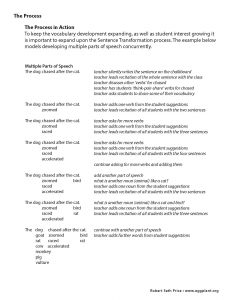 Sentence Transformation for Vocabulary Development is a collaborative method to build vocabulary from prior knowledge, readings, schema connections, and peer to peer learning. Sentence Transformation models and develops reading fluency, vocabulary, parts of grammar (nouns, adjectives, adverbs, prepositions, etc.), langauge and spelling patterns and collaborative learning.
Sentence Transformation for Vocabulary Development is a collaborative method to build vocabulary from prior knowledge, readings, schema connections, and peer to peer learning. Sentence Transformation models and develops reading fluency, vocabulary, parts of grammar (nouns, adjectives, adverbs, prepositions, etc.), langauge and spelling patterns and collaborative learning.
Strengths
Sentence Transformation is a process that involves the whole class and/or small groups in a very participatory activity that builds vocabulary and fluency. It requires minimal resources – a basic chalkboard and/or a wall painted with chalkboard paint. Students can lead the process in addition to the teacher. For the teacher it is an excellent opportunity to model reading with fluency and thinking aloud with vocabulary development.
When
The process takes approximately 5-15 minutes. It is recommended doing the process 1-2 times daily. The sentence can most effectively connect to content during the day.
Extensions
After developing vocabulary with the sentence for various parts of speech, students can extend this activity by writing sentences from the developed sentence transformation. Additionally, the vocabulary if connected to current studies and content can be used as part of a vocabulary word wall.
Needs
A medium or large size chalkboard, white board and/or projection are very effective. This provides sufficient space to write complete sentences (row) and develop a wide range of vocabulary (columns).
Grade Levels and Content Areas
This method is applicable at all grade levels and across all content areas.
The Process
- The teacher writes the sentence on the chalkboard saying nothing with the students watching
- The teacher recitates the sentence while tracking (pointing to) the words in phrases
- The teacher selects one part of speech (e.g. adjective) and asks for words with similar meanings
- After adding one word, the teacher recitates with the students the complete sentence with each added vocabulary word
- The teacher continues with this process adding futher words to the part of speech being expanded
- Reminder—add one part of speech, then recitate all the sentences so far. This supports fluency practice and learning the patterns progressively.
Grounding Principles
- Fluency
- Performance and Community
- Relationships
- Patterns
- Student Voice
Components for Success
- Rhythm
- Regulary
Students as the Facilitators (Teachers)
Having students becoming the whole class and/or small group leaders provides an opportunity to peer to peer transfer, observation of students to assess the student leaders as much as the participating students.
In the Classroom: Two examples for Elementary, Upper Elementary and Middle School
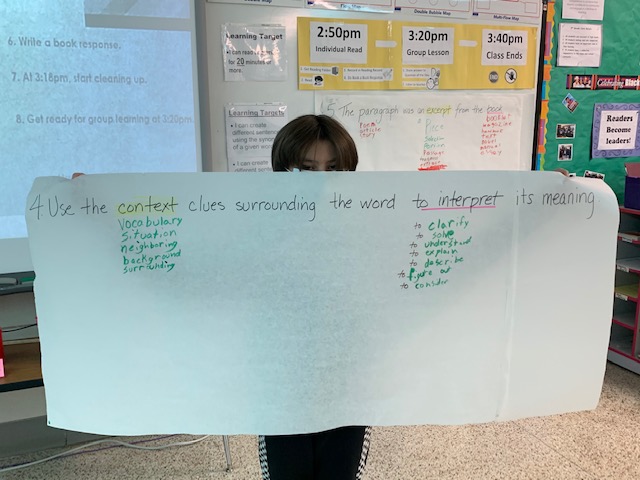
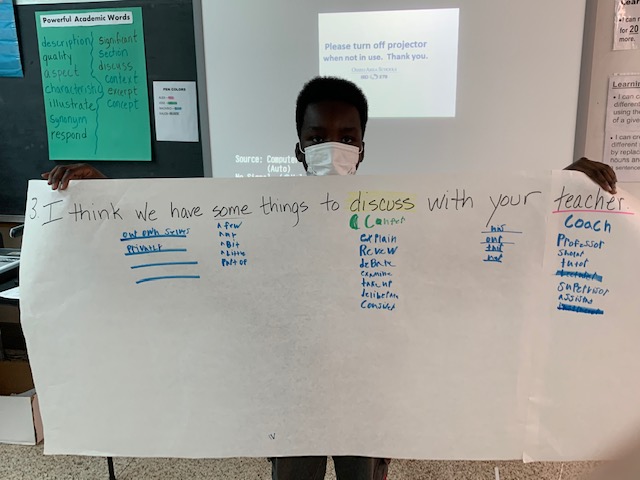
Primary and Elementary – The How of Sentence Transformation
Upper Elementary and Middle School
